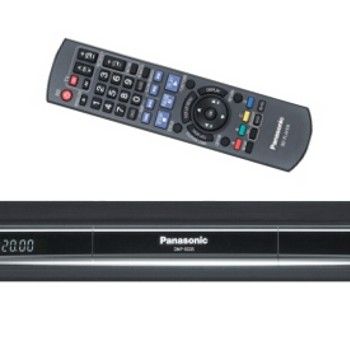Back when Blu-ray was just a twinkle in its creator’s eye, there was much talk about BD Live and how it would revolutionise the way we watch movies, but little did we know that there would be an arduous 2-year wait for the idea to come to fruition. But now, we’re finally seeing the first BD Live capable decks come through, and it was Panasonic that got the ball rolling back in July with its brilliant DMP-BD50.
Our quick take
The DMP-BD35 is an exceptionally good Blu-ray player that offers tremendous value for money. Not only does it deliver the goods from a performance perspective but it’s also packed with features and handles like a dream. DVD playback is the only blot on the landscape but it’s not bad enough to stop us giving this deck our wholehearted recommendation.

Panasonic DMP-BD35 Blu-ray player - 4.5 / 5
| FOR | AGAINST |
|---|---|
|
|
Well now the company has launched a pair of new BD Live machines - the DMP-BD35 and BD55 - even though it seems like only yesterday that we were fawning over the BD50. The deck on test here is the successor to the Profile 1.1 DMP-BD30 launched at the start of 2008, and lacks a couple of features found on the step-up BD55, namely 7.1-channel analogue outputs and advanced audio circuitry.
If you’re not familiar with BD Live (otherwise known as Profile 2.0) let’s recap: it’s a feature that makes it possible to hook a Blu-ray player up to the Internet (using an Ethernet connection) and download bonus content related to the movie you’ve bought on Blu-ray, and access other features such as web chats and online games. Some discs, such as Starship Troopers 3, even let you upload a picture of yourself to the Internet and paste it into the movie. The current BD Live fare is pretty hit and miss, but it does have a lot of potential.
To meet the Profile 2.0 requirements, a player needs to have at least 1GB of memory, either built-in or using removeable media, and the DMP-BD35 gores down the removeable media route with an SD card slot on the front panel. This can be used not only for storing bonus content from the Internet, but also to store "virtual package" data found on some Blu-ray discs and to play back JPEG and AVCHD files.
The rest of the front panel is easy on the eye, with the predictable all-black finish giving the unit the required mass-market appeal, while its 49mm height makes it the world’s slimmest Blu-ray player.
The lack of 5.1 or 7.1-channel outputs makes the deck’s rear panel look deceptively sparse, and means that you’ll definitely need an HDMI-equipped AV receiver if you want to enjoy Dolby True HD or DTS HD Master Audio soundtracks. But apart from that it offers all the sockets you need - there’s an HDMI v1.3 output (which carries 1080/24p pictures, HD audio bitstreams and decoded LPCM audio), the all-important Ethernet port, Component/Composite video outputs, stereo audio and optical digital audio output.
The player is surprisingly open-minded when it comes to format support. Disc-wise, it accepts every recordable DVD format (including RAM) as well as CD-R/-RW and BD-RW/-R and it’ll even play your MP3 and DivX library. Elsewhere there’s support for Deep Colour, x.v.Colour and Viera Link which have limited appeal right now but look good on the spec sheet.
When playing a disc for the first time, what jumps out is the deck’s slickness and effortless usability. All of the onscreen menus are clear and uncomplicated, the remote features big, foolproof buttons and a tidy layout, while the unit boots up Java-heavy discs in a tolerable amount of time (though there’s still a way to go before it reaches DVD speeds).
The DMP-BD35’s high-def picture performance is out of this world, presenting 1080p Blu-ray discs with pin-sharp clarity, smooth edges, vivid colours and deep blacks. It’s by far the best picture performance we’ve seen at this price, and much of the credit for this should go to Panasonic’s P4HD processing, which does a fantastic job of boosting detail and reducing diagonal jaggies, as well as PHL Reference Chroma Processor Plus, which improves colour fidelity. Sadly we can’t heap the same praise on the deck’s DVD playback, which is surprisingly soft and noisy.
There are no problems with its sound quality and if your receiver can decode Dolby True HD or DTS HD Master Audio bitstreams then you’re in for a real treat. To hear BonusView commentaries you’ll need to set the deck to decode HD audio to PCM but the quality is still impressive, with the secondary audio sounding clearly audible over the primary track.
To recap
A feature-packed Blu-ray player that delivers excellent performance and handles like a dream, making it great value for money
